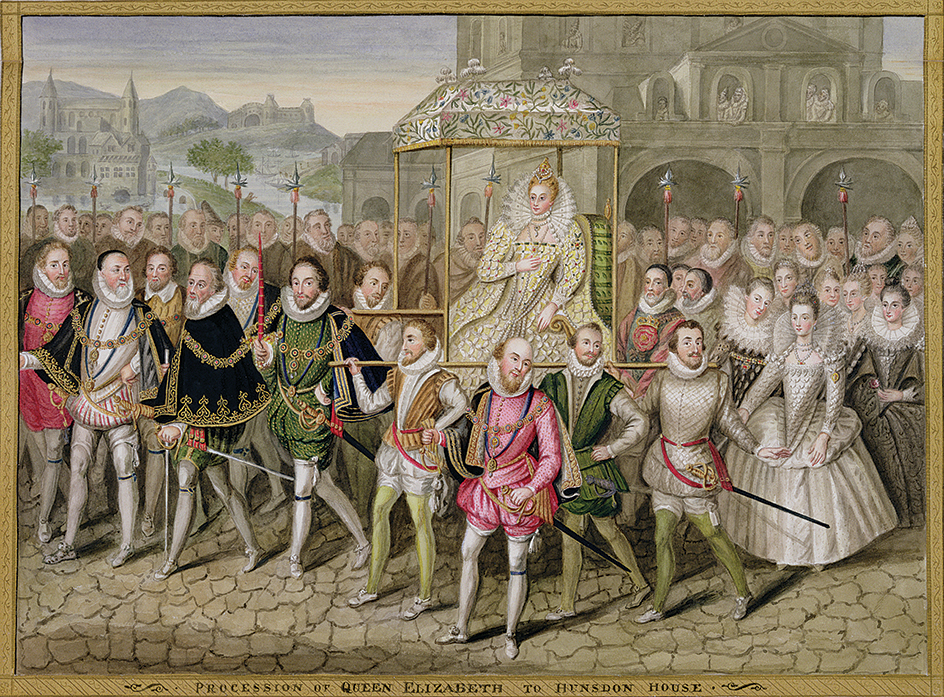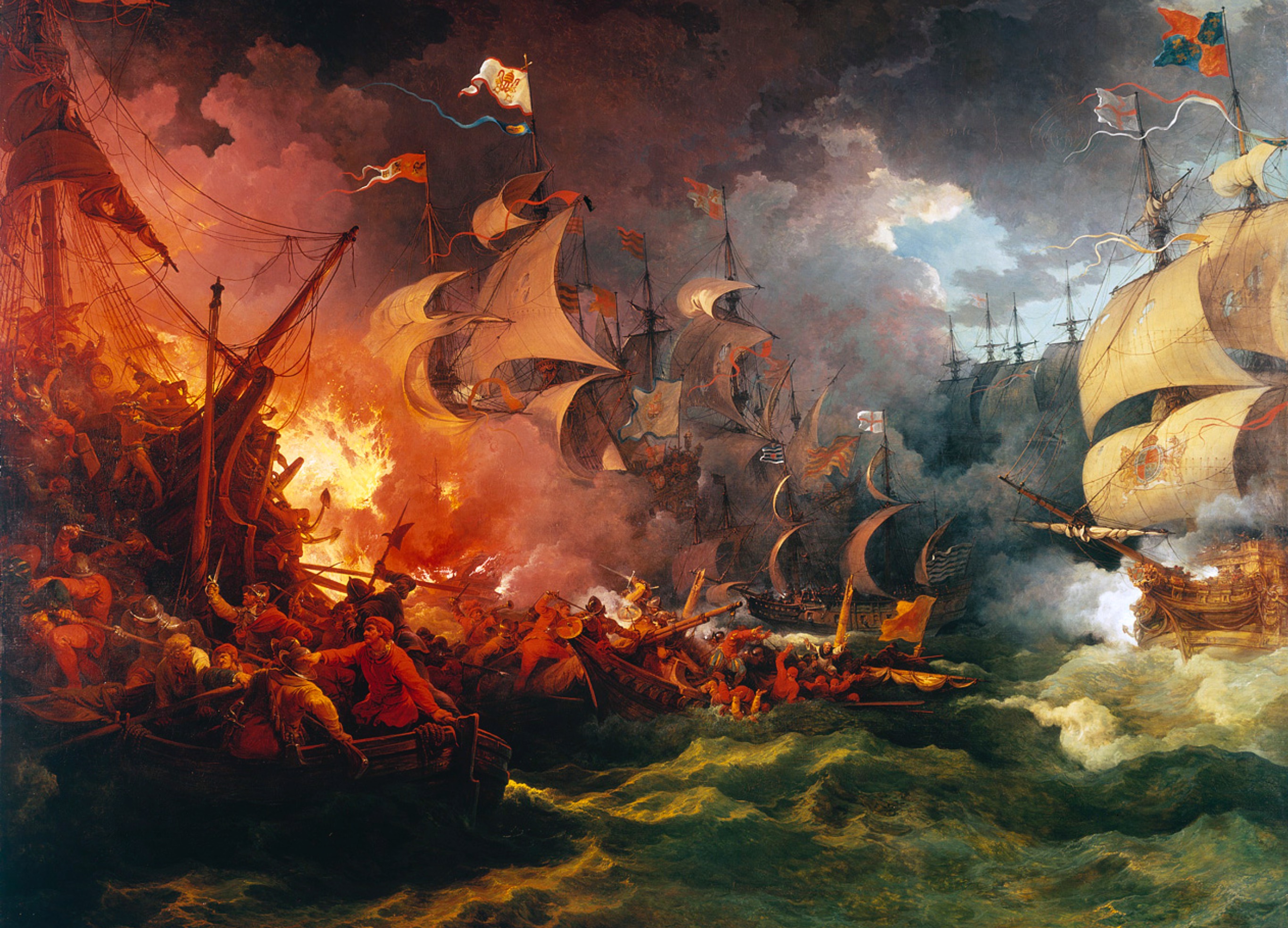Elizabethan Age, or Elizabethan Era, was the period of English history during the reign of Queen Elizabeth I, from 1558 to 1603. Elizabeth was an able and exceptionally intelligent ruler who won the loyalty and admiration of her subjects. Because of her strong personality and England’s numerous achievements under her rule, Elizabeth’s reign is often regarded as a Golden Age in the history of England.

Elizabeth was born in 1533. She was the daughter of King Henry VIII and his second wife, Anne Boleyn. Henry’s first marriage had failed to produce a male heir. Henry had removed England from the Roman Catholic Church after the pope refused to declare his first marriage invalid so that he could marry Anne. Consequently, Elizabeth’s claim to the throne depended on England remaining Protestant and independent of papal authority. Elizabeth became queen in 1558. During her reign, she pursued a moderate religious course. She kept England Protestant while trying to avoid costly wars with Europe’s Roman Catholic nations.
Elizabeth’s efforts to avoid religious conflict were disrupted in 1568 when her cousin Mary Stuart—also known as Mary, Queen of Scots—was forced from the throne of Scotland and fled to England. Mary was a Catholic. She soon became the focus of plots to overthrow Elizabeth and return England to the Catholic Church. In 1587, Elizabeth ordered Mary’s execution. Mary’s death resulted in open war with Spain, the most powerful Catholic country in Europe. In 1588, Elizabeth’s navy defeated the powerful Spanish Armada, a fleet of armed ships that tried to invade England.

From the 1570’s to the end of Elizabeth’s reign, English sea captains such as Sir Francis Drake and Sir Walter Raleigh preyed on Spanish shipping. They also explored seas and coastlines around the world. In 1585, Raleigh organized the earliest English attempt to establish a colony in America. The short-lived settlement was on Roanoke Island in what is now North Carolina. English merchants formed the trading company known as the East India Company in 1600. Such enterprises expanded trade with new markets around the world. They laid the groundwork for English naval power and global trade in later centuries.
Increases in trade, population, and prices brought opportunity for some people in England but hardship for others. Almost 90 percent of the population still lived in rural areas. Rising population and changes in land use left many villagers unemployed. These conditions fueled immigration to the towns. Many of those who left the countryside ended up in London. By 1603, London was one of Europe’s largest cities, with a population of about 200,000 people. Some people found their fortune in the city. For most people, however, city life meant low wages, periodic unemployment, and increased risk of such diseases as smallpox and plague.
For the wealthy and the growing middle class, city life brought cultural opportunities. Literacy was increasing. The number of books printed in English rose dramatically. England’s first theater was built in London in the 1570’s. English literature flowered during the Elizabethan Age, with the work of such writers as Francis Bacon, Ben Jonson, Christopher Marlowe, William Shakespeare, and Edmund Spenser. Notable composers included William Byrd, John Dowland, and Thomas Tallis.
Elizabethan society was based on the class structure inherited from the Middle Ages (the period in European history from about the 400’s through the 1400’s). Most people remained in the social and economic class of their birth family. People usually married when they were in their 20’s. In a typical family, two or three children survived to adulthood. However, it was not unusual for an equal number to die in childhood. By age 6, children were on the path dictated by their family background. Children of the aristocracy and middle class received an education. Other children would begin to help with the work of the household. By the time they were teenagers, they were earning a living, often as servants or laborers.
Ordinary people worked six days a week but still had leisure time on Sundays and holidays. Music and dancing were popular across the social classes. People enjoyed card games. They also played board games, such as backgammon and chess. Sports included archery, bowling, football (soccer), swordfighting, and wrestling.
Elizabeth’s reign was a period of relative peace in England, but there was also conflict and unrest. Society viewed church and state as indivisible, so departure from church doctrine was seen as a threat to the government. Some people in England remained Catholic. Elizabeth was initially reluctant to persecute her Catholic subjects, but after the pope declared support for opposition to Elizabeth in 1570, Catholics were increasingly seen as potential traitors and subject to fines and imprisonment. Some English Protestants believed that the English church needed to be further purified of Catholic features. These “Puritans” also experienced persecution. However, the Puritan faction enjoyed some support in Parliament. Parliament’s power of taxation made it crucial to government finances, so Elizabeth was careful to maintain good relations with Parliament and the wealthy classes it represented.
The final years of Elizabeth’s reign were darkened by a series of poor harvests, rebellion in Ireland, and a failed uprising by Elizabeth’s former favorite, the Earl of Essex. Nonetheless, a peaceful succession followed her death in 1603. James VI of Scotland, the Protestant son of Mary Stuart, succeeded Elizabeth, thereby also becoming James I of England. James and his successor, Charles I, failed to sustain Elizabeth’s delicate political balancing act. The result was a civil war about 40 years after Elizabeth’s death.
